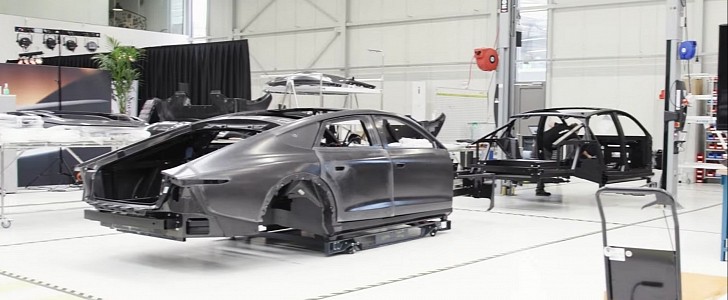We know that Lightyear plans to start delivering its first vehicle to customers in 2022. Production was expected to begin in the summer. However, Patrick Creevey updated us by saying that it will only happen “later this year.” Lightyear’s senior project manager also talked a bit about production-intent prototypes and the VP, which completed its mission.
VP is the acronym for validation prototype. You have already seen it several times in our articles. It is the vehicle that achieved 11.8 km/kWh (7.3 mi/kWh) in the Aldenhoven Testing Center in Germany, something that will make it the most efficient production vehicle when it reaches its first buyers.
The senior project manager shared an interesting story about the car. With four days left for the test, they discovered one of the in-wheel motors had an issue. According to Creevey, that demanded the company to “strip the car on one side, ship it across Europe, fix it, ship it back, rebuild the car,” and hit the track again.
Considering the company is from the Netherlands, and the testing facility is in Germany, that would mean much shorter distances than Creevey suggested. It could be the case that it had to be shipped to the UK – where he is based – or to Finland, where Valmet Automotive is. This last possibility is the one that would make the car travel more.
Whatever was the case, Lightyear’s team managed to do all that in only two days. It could have spent a lot less time if the vehicle could have been fixed at the location, which is something that production vehicles will have to offer. After all, no one should ship their EVs back to the factory to get them repaired.
Creevey stated that the primary goal of the VP was to confirm the car could be powered solely by its five square meters of solar panels. With that mission accomplished, the vehicle will now be in the hands of Lightyear’s Research team, which will use it to develop new technologies to be used in new products. In other words, the Lightyear Two, which should go on sale by 2024, costing around €30,000 ($32.589 at the current exchange rate).
The senior project manager shared an interesting story about the car. With four days left for the test, they discovered one of the in-wheel motors had an issue. According to Creevey, that demanded the company to “strip the car on one side, ship it across Europe, fix it, ship it back, rebuild the car,” and hit the track again.
Considering the company is from the Netherlands, and the testing facility is in Germany, that would mean much shorter distances than Creevey suggested. It could be the case that it had to be shipped to the UK – where he is based – or to Finland, where Valmet Automotive is. This last possibility is the one that would make the car travel more.
Whatever was the case, Lightyear’s team managed to do all that in only two days. It could have spent a lot less time if the vehicle could have been fixed at the location, which is something that production vehicles will have to offer. After all, no one should ship their EVs back to the factory to get them repaired.
Creevey stated that the primary goal of the VP was to confirm the car could be powered solely by its five square meters of solar panels. With that mission accomplished, the vehicle will now be in the hands of Lightyear’s Research team, which will use it to develop new technologies to be used in new products. In other words, the Lightyear Two, which should go on sale by 2024, costing around €30,000 ($32.589 at the current exchange rate).











































